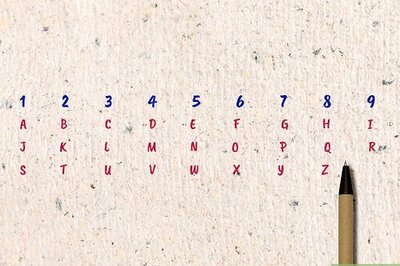
views
Sendai: Japan faces a growing humanitarian crisis on a scale not seen since World War Two after its devastating earthquake and tsunami left millions of people without water, electricity, homes or heat.
As officials on Sunday predicted the death toll could top 10,000, the country mobilised 100,000 soldiers to deliver food, water and fuel, and pull stranded survivors from buildings and damaged homes. More than 450,000 people had been evacuated.
It is one of the largest aid deployments of Japan's Self-Defense Forces and doubles the number of troops from Saturday.
"I would like to believe that there still are survivors," said Masaru Kudo, a soldier dispatched to help survivors in Rikuzentakata, a nearly flattened village of 24,500 people in far-northern Iwate prefecture.
Two days after neighbourhoods were submerged by waves that swallowed an estimated 5,000 homes, Rikuzentakata is one of many towns and cities facing both a fast-rising death toll and dwindling supplies of food, fuel and water.
"Water, food, gasoline and, kerosene - these are all lacking," said Rikuzentakata's mayor, Futoshi Toba.
Nationwide, about 1.8 million households were without power, and 1.4 million without electricity, Japan's Ministry of Health, Labour and Welfare said.
Tens of thousands of people had taken shelter in schools and stadiums to escape near-freezing temperatures. Television stations showed repeated footage of people sleeping under blankets at makeshift evacuation centres.
About 140,000 people had been evacuated from areas around a crippled nuclear power plant in Koriyama in Fukushima Prefecture. They were scanned for radiation exposure as they entered shelters
At least 10,000 people were feared killed by the earthquake in Miyagi prefecture alone, according to its police chief. As many as 20,820 buildings nationwide were either destroyed or badly damaged, according to Kyodo News.
Many expect the death toll to go higher. Kyodo said local governments had lost contact with tens of thousands of people.
Japan received offer of help from 69 countries, the Foreign Ministry said.
A US aircraft carrier off the northeastern coast launched relief operations with US and Japanese helicopters transporting 30,000 portions of emergency food supplies.
South Korea is sending a rescue team of about 100 workers.
China's 15-member rescue team arrived in Japan on Sunday, state news agency Xinhua said, bringing with them four tonnes of equipment for search and rescue operations, including their own power supply and telecommunications.
The team headed immediately to the main quake zone to help in the search for survivors, Xinhua added.
Australia's government has offered self-contained field hospitals and disaster victim identification teams, with two military transport aircraft carrying search and rescue teams, as well as sniffer dogs, having already left.
The Indian government is getting ready to ship planeloads of woollen blankets to affected areas to help fight cold weather conditions, according Foreign Secretary Nirupama Rao, who held discussions with the Japanese ambassador to New Delhi.
Prime Minister Manmohan Singh earlier offered to "help Japan in any way required".
Even the mayor of Afghanistan's southern Kandahar City told Reuters on Sunday the city is donating $ 50,000 to the "sisters and brothers" of Japan following the earthquake and tsunami.
"I know $ 50,000 is not a lot of money for a country like Japan but it is a show of appreciation from the Kandahar people," said Kandahar Mayor Ghulam Haidar Hamidi.



















Comments
0 comment